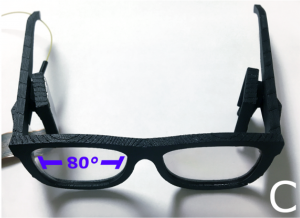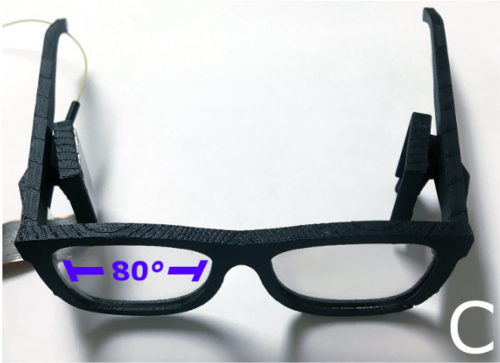Microsoft’s new lightweight prototype display comes with trade-offs.
Recently, a group of industry and academic researchers met at the SCIEN Workshop on Augmented and Mixed Reality to discuss the future of virtual and mixed reality (VR/MR). Undoubtedly, people would like to experience VR/MR on lightweight devices while maintaining precision of human vision.
Microsoft had introduced the concept of mixed reality with Hololens. It is an untethered device that responds to hand gestures. The HoloLens display is basically a set of transparent screens placed just in front of the eyes. Each eyepiece or screen lets light through and also shows digital content the way a monitor does. Each screen shows a slightly different image to create a stereoscopic illusion like 3D glasses do at 3D movies.
In a new publication to be presented at Sigggraph 2017, Microsoft’s Andrew Maimone, Andreas Georgio, and Joel Kollin discuss how digital holography can be used to build near-eye displays for virtual and mixed (or augmented) reality. What’s described in the paper are “novel designs for virtual and augmented reality near-eye displays based on phase-only holographic projection.”
The researchers’ methodology is “built on the principles of Fresnel holography and double phase amplitude encoding with additional hardware, phase correction factors, and spatial light modulator encodings to achieve full color, high contrast and low noise holograms with high resolution and true per-pixel focal control.”
The Microsoft Research Team has revealed a prototype display in a sunglasses-like form factor with an 80° horizontal field of view. The display uses a thin and highly transparent holographic optical element as a combiner, cut in the shape of an eyeglass lens, allowing an optical see-through capability.

Balancing the trade-off between the field of view and device form factor still remains a stumbling block to building near-eye displays.
This augmented reality headset prototype can be called an advancement over HoloLens in terms of form factor. But a trade-off lies in performance. This prototype is only capable of flat, monoscopic images and requires a hitched robust external processor to run.
What do we think?
This is a research project; odds are Microsoft hardware will not put it into production, but it does show where Microsoft’s interests are, and that they are doing some leading edge research work. The paper came out a few weeks after Facebook indicated it was working on AR glasses. Apple has also expressed strong interest in developing AR technology, as have many others. The research team from Microsoft will be discussing this project at a panel at this year’s Siggraph convention in Los Angeles, July 30-August 3.






